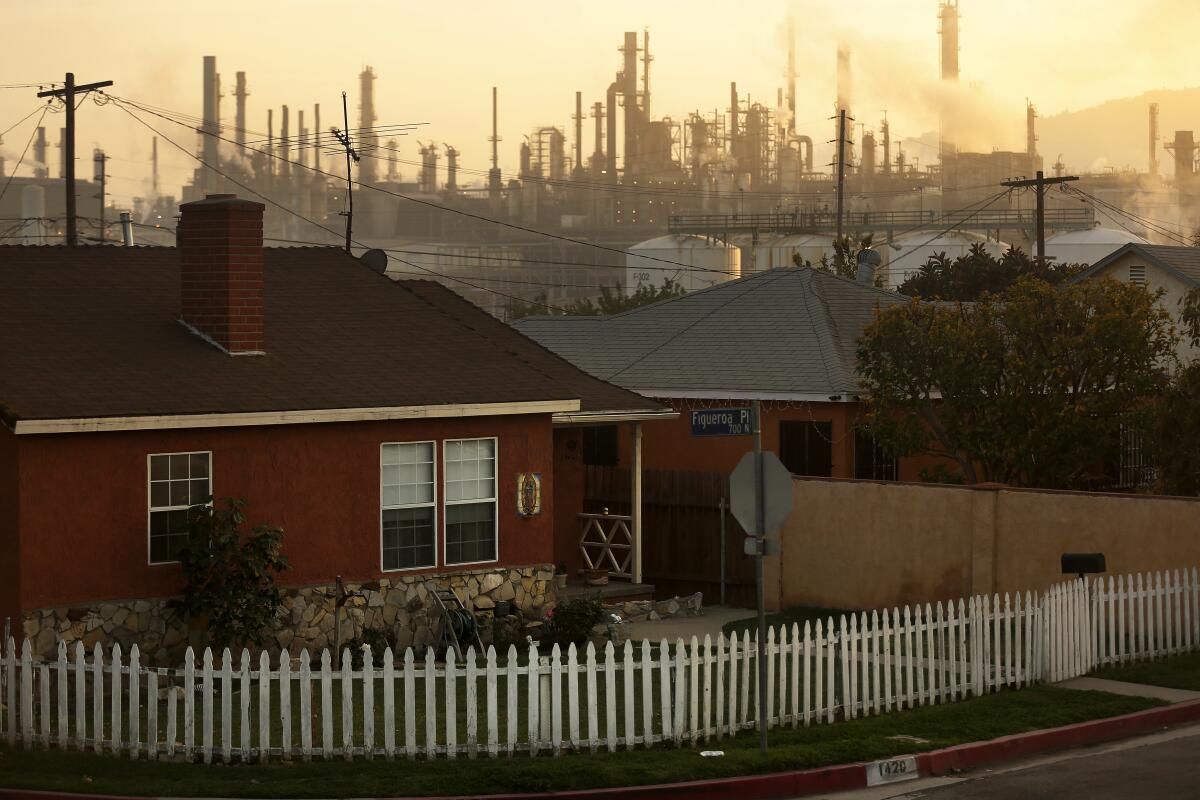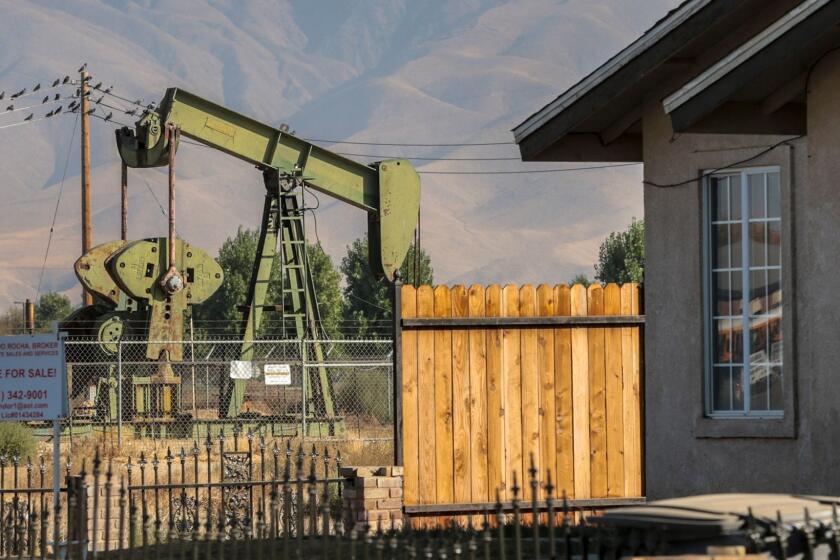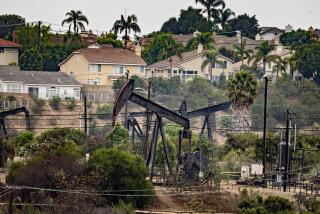Op-Ed: Where are drilling protections for California residents?

- Share via
California is one of the leading oil producers in the country, yet its residents don’t have a basic safeguard from industry hazards: buffer zones to protect people from oil and gas extraction near homes and schools. A new wave of scientific research has documented the health problems for people living near drilling operations, making this issue even more urgent.
Buffer zones are not new in several other states with strong fossil fuel economies. Of the top eight oil-producing states in the country, four have at least some statewide buffer zone requirements — Colorado, North Dakota, Texas and Wyoming. Some local governments have also established their own buffer regulations. San Miguel County in New Mexico, for example, requires a 4,000-foot zone. Here in California, Ventura County established buffer zones in 2020 that require wells to be set back 1,500 feet from homes and 2,500 feet from schools.
Lawmakers voted down a bill to require buffer zones around oil and gas extraction. Environmental justice activists still see hope.
California and Colorado have been on parallel paths for several years, trying to reckon with a long history of oil and gas regulators promoting the industry instead of managing it. Colorado’s move to impose buffer zones shows that it can be done even against vigorous industry opposition.
In 2019, Colorado legislators revamped the state’s approach to oil and gas, enacting measures long held off by the industry. Spurred on by the explosion in Firestone, Colo., that killed two men and alarmed residents about leaking gas lines, state leaders reformed the Colorado Oil & Gas Conservation Commission. That home was 200 feet from a natural gas well. Instead of “fostering” oil and gas development, the agency is now responsible for “regulating” oil and gas companies to protect public health. That new mission was followed by a profound shift in regulations; in late 2020, Colorado imposed 2,000 foot setbacks around homes and schools, supported by the publication of a state-commissioned study on the harmful health impacts from oil and gas operations.
California also saw regulatory scandal, when investigative reporting in 2019 revealed that leaders in the state Department of Conservation’s Division of Oil, Gas and Geothermal Resources held investments in major oil companies in the state, and that fracking permits had doubled since Gov. Gavin Newsom took office. Newsom has since cleaned house, and the agency was renamed the Geologic Energy Management Division (CalGEM), with a new purpose to protect public health and safety.
But the question of whether the agency could change its century-old ways has remained unanswered. That’s because new public health protections in the works at CalGEM have languished.
At the end of 2020, CalGEM announced further delays to its rule-making process with a draft regulation now expected sometime in the spring. In the time the state has been working on the regulation, the Newsom administration approved 3,729 new oil and gas permits with no statewide buffer zone protections in place. Nearly 300 of those new permits were for wells within 2,500 feet of a home, a school or a place where people receive healthcare.
Though regulations lag in California, public health experts in the state have been hard at work, especially in studying the industry’s effects on women and infants — more than a million babies were born to mothers living within one mile of a well between 2006 and 2015. A Stanford University study found that women who lived near wells while pregnant were significantly more likely to experience a spontaneous preterm birth at 20 to 31 weeks. Preterm birth is one of the top five leading causes of infant death in the United States.
UC Berkeley scientists found that a woman living near a high-volume well in rural areas of the state would be 40% more likely to have an infant weighing less than 5.5. pounds. Low birth weight is linked to higher rates of illnesses and developmental delays.
California needs decisive action from state leaders, or it will continue to be one of the few major oil-producing states without statewide buffer zone protections in place. The state’s current slow pace in regulatory planning is bad news for the 2.1 million Californians — many of them in communities of color — who live within a mile of actively producing wells.
California has been known as the land of big ideas, forging new policies and innovations for our environment and our health. But this year, Coloradans can breathe a little easier knowing that oil companies can’t drill new wells in their backyards or next to their kids’ schools. Californians are still waiting for their state to step into the future.
Michael Freeman and Colin O’Brien are environmental attorneys working on oil and gas issues at Earthjustice in Colorado and California, respectively.
More to Read
A cure for the common opinion
Get thought-provoking perspectives with our weekly newsletter.
You may occasionally receive promotional content from the Los Angeles Times.











